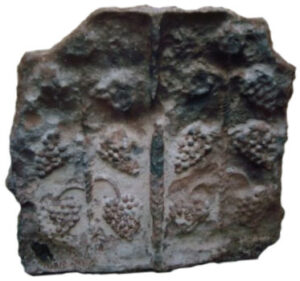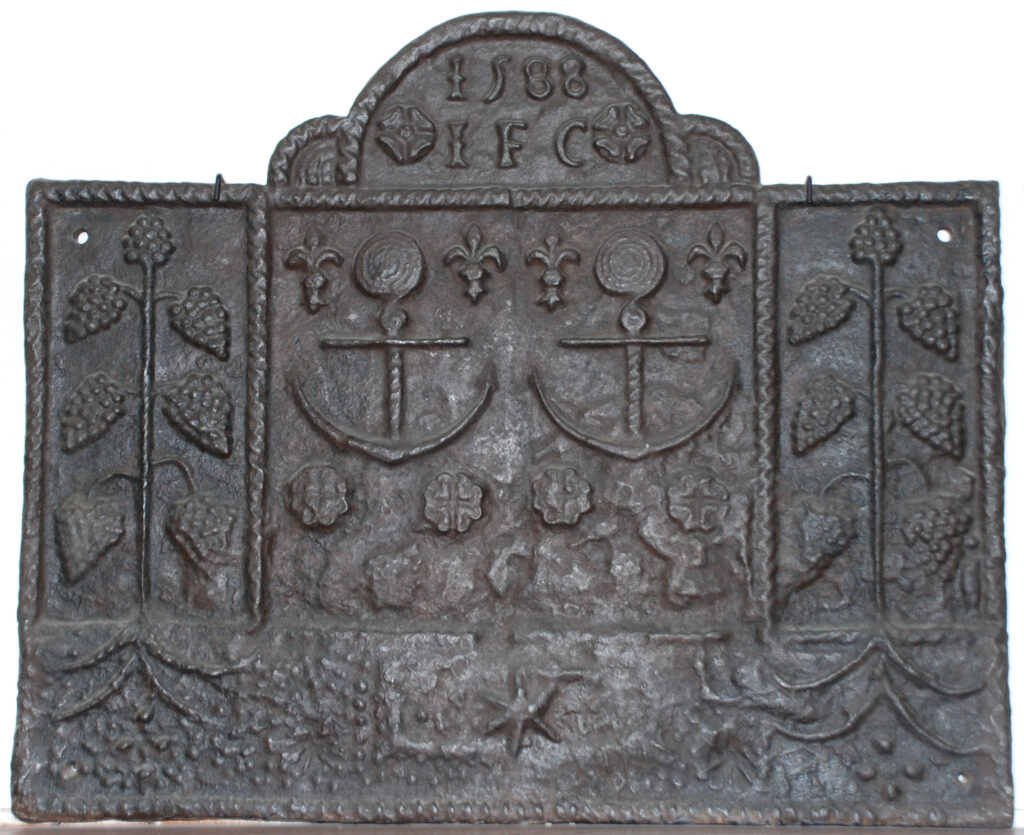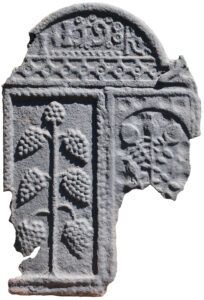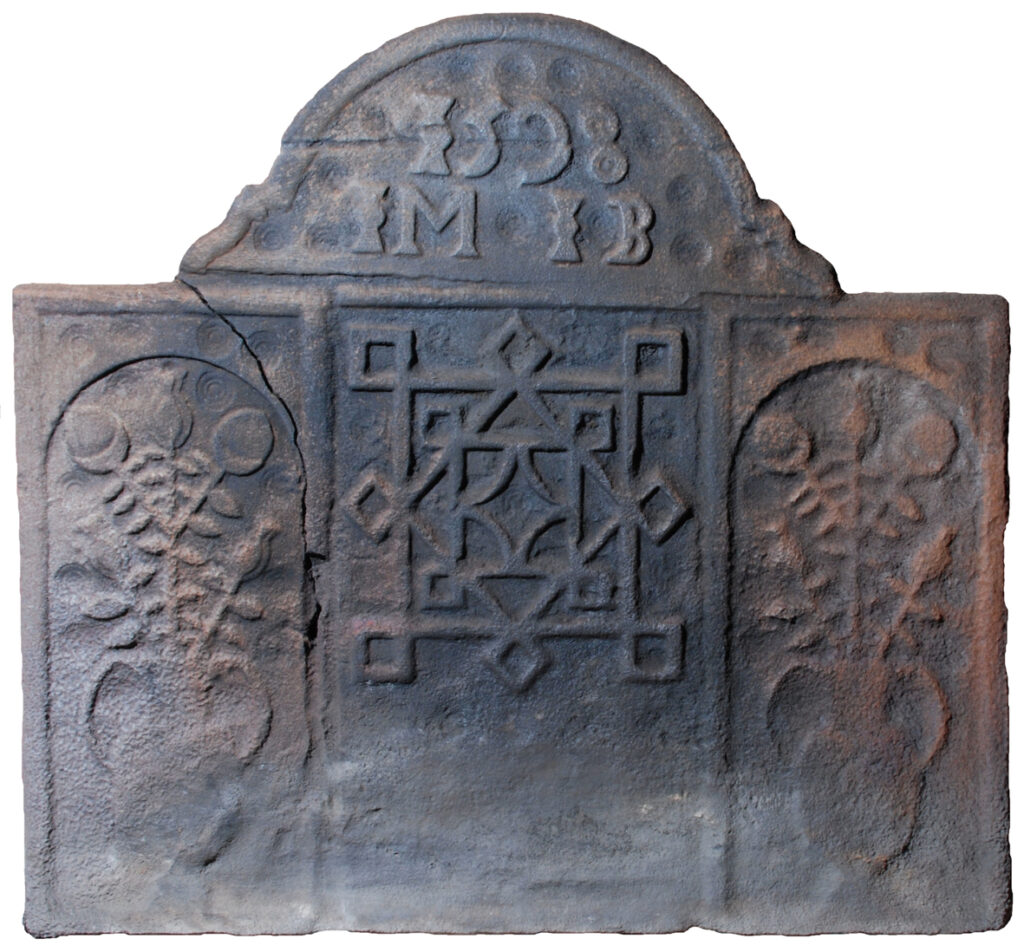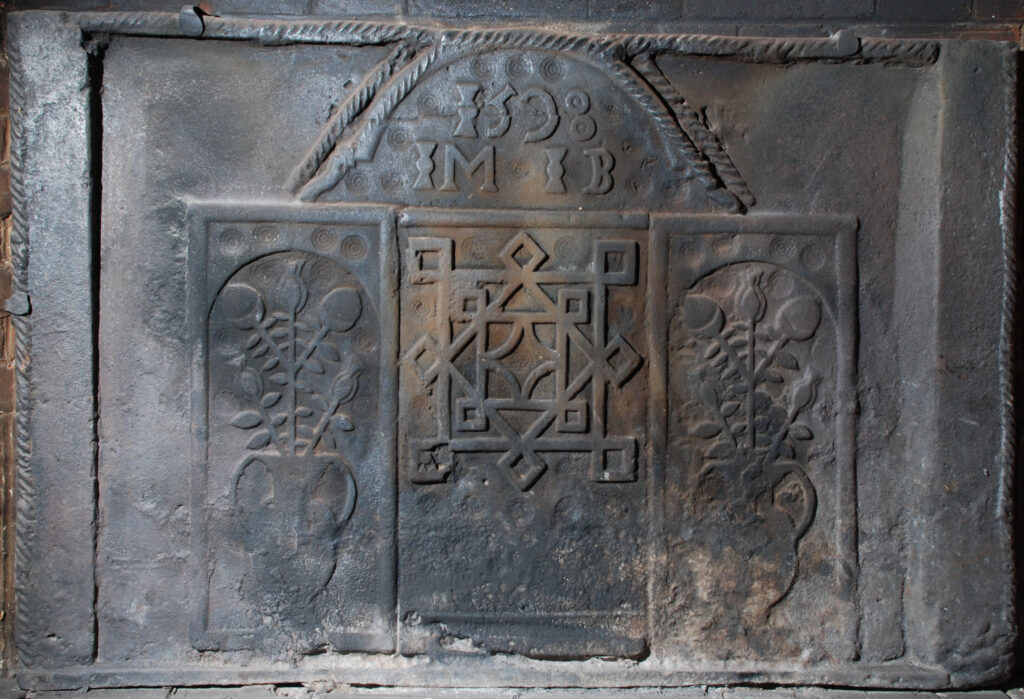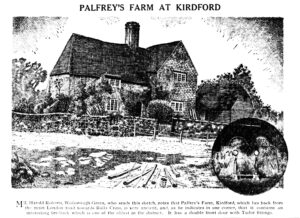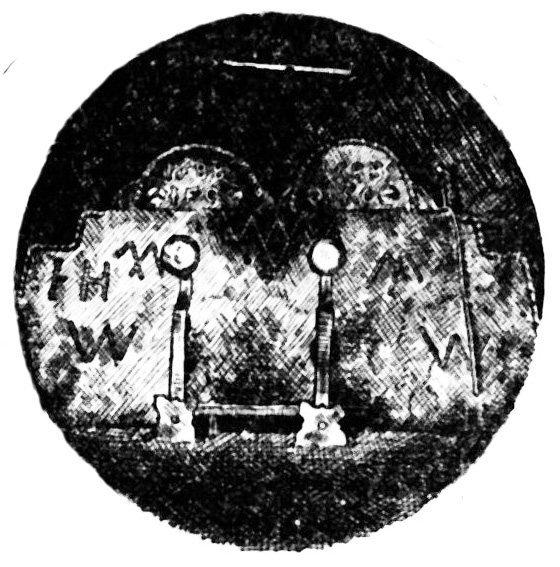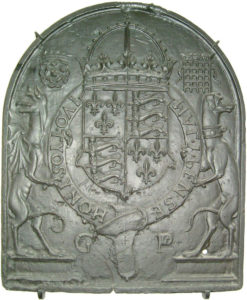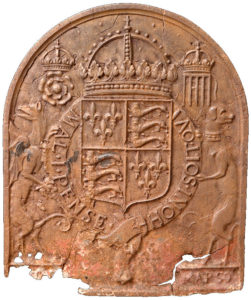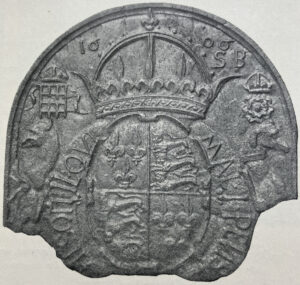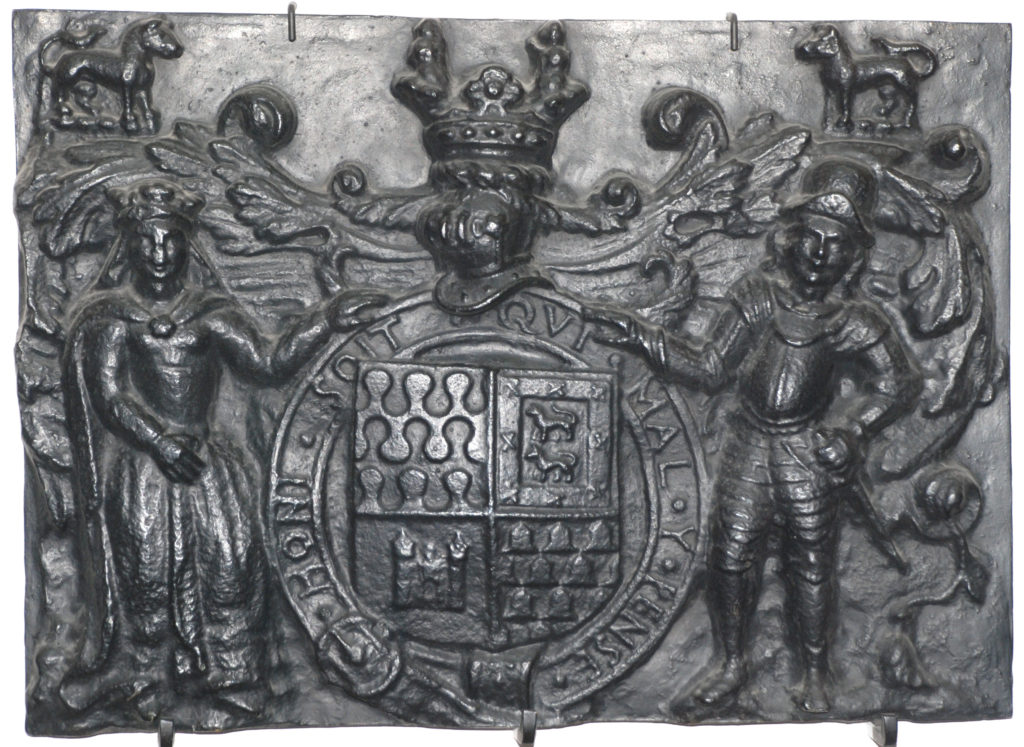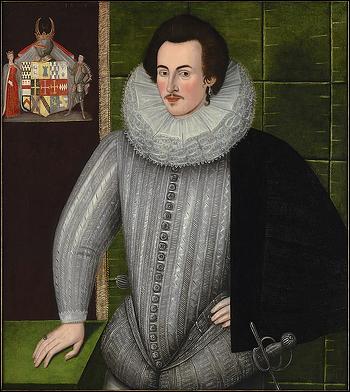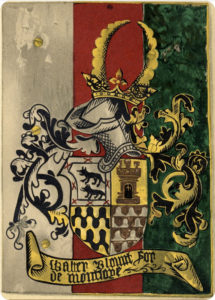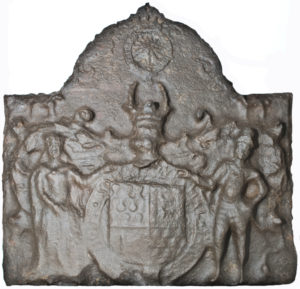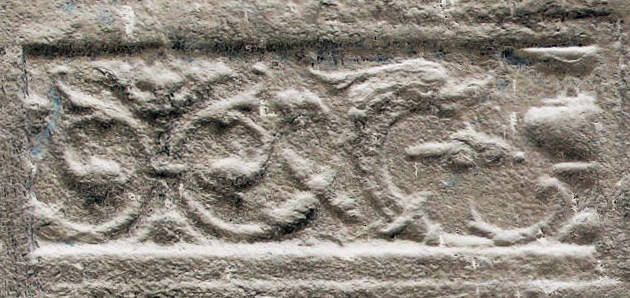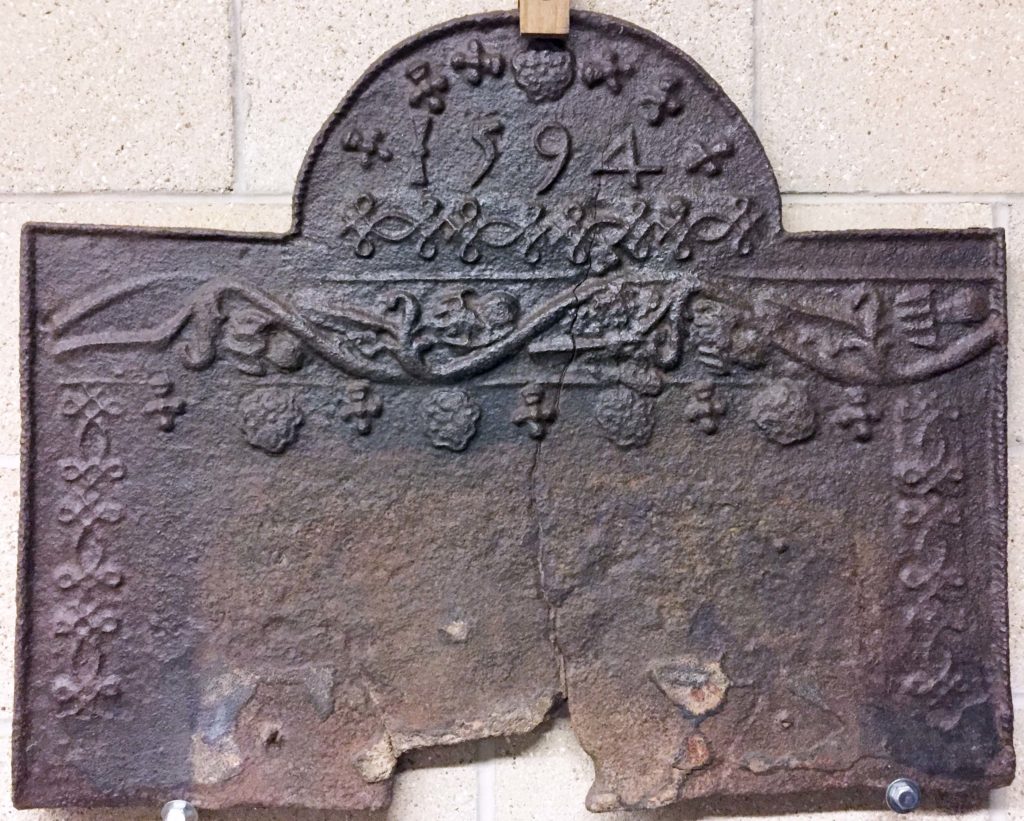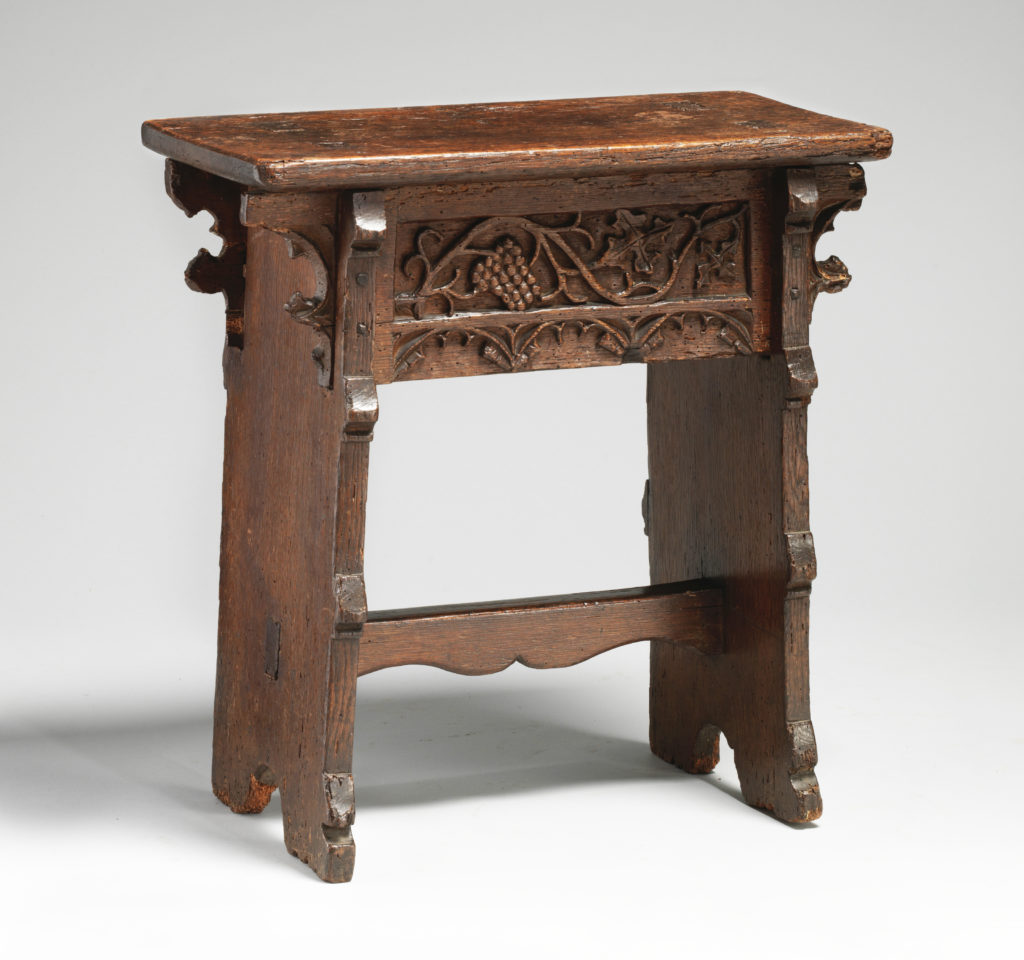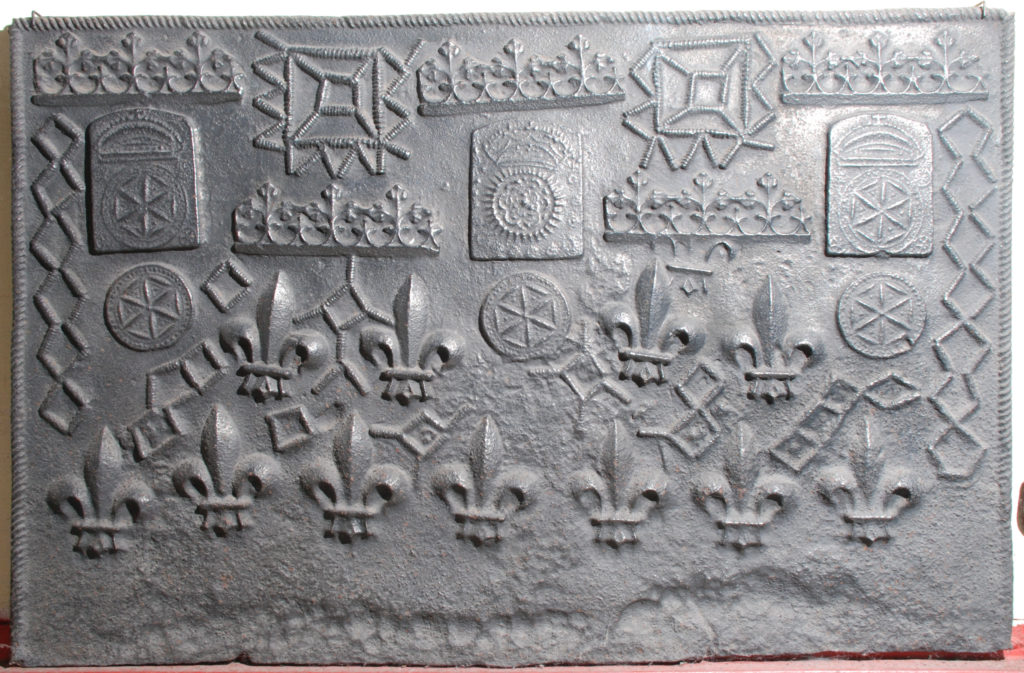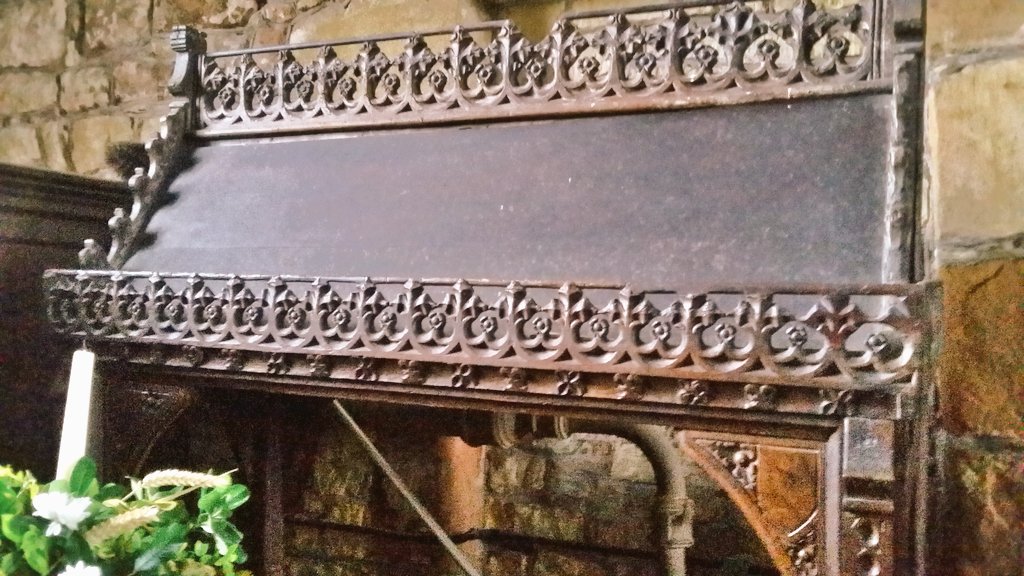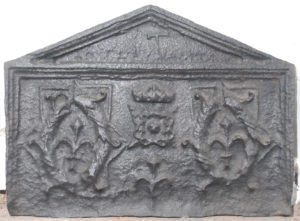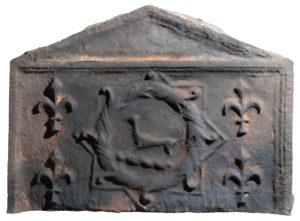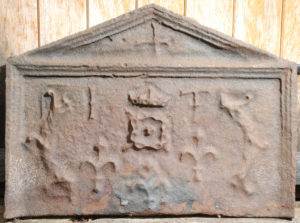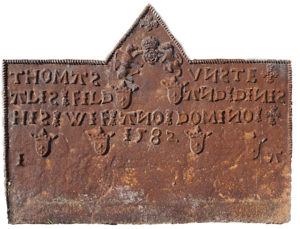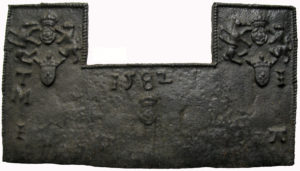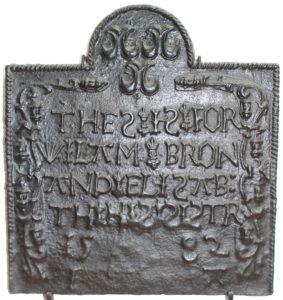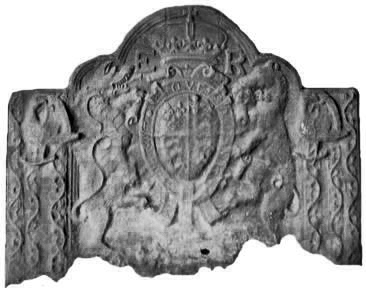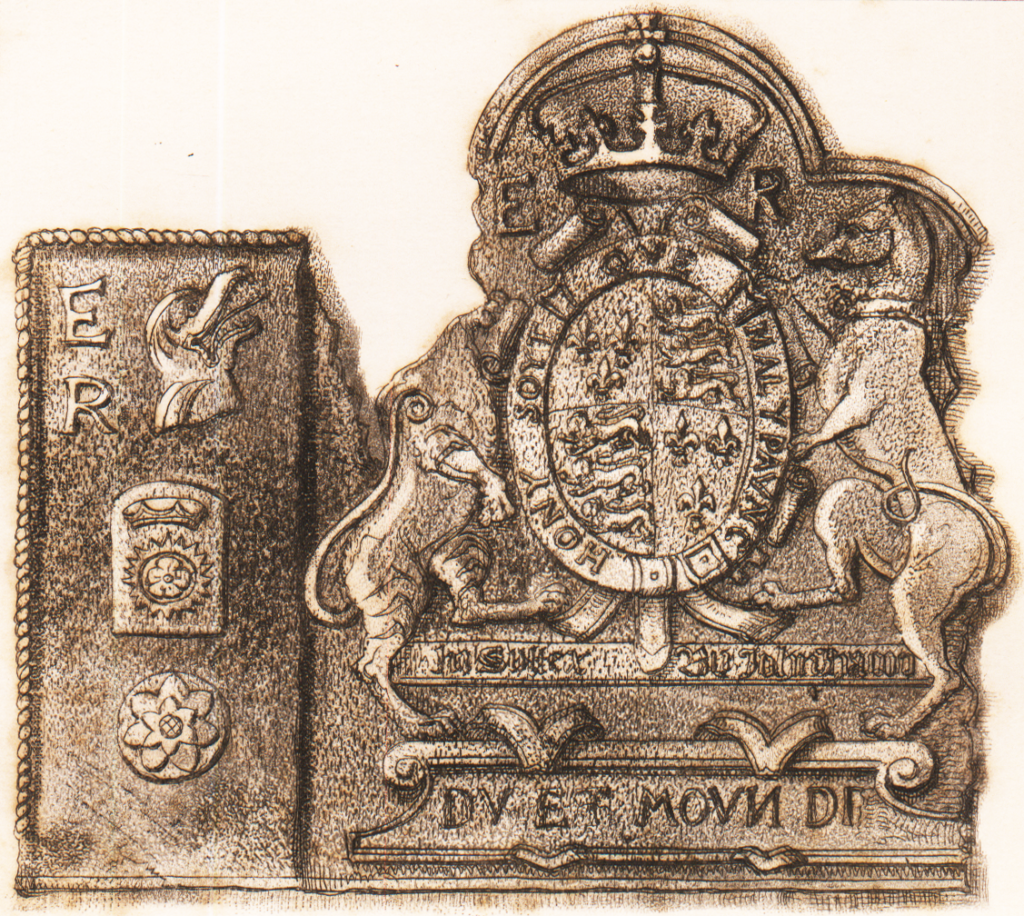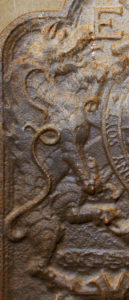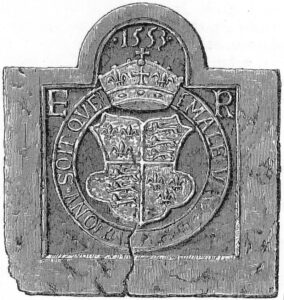
In a paper published in 1863 in Archaeologia Cambrensis, entitled ‘Sussex Ironmasters in Glamorganshire’, W. Llewellin wrote about this fireback that had been discovered in the 1820s during renovations to the house belonging to Anthony Hill (1784-1862) the then proprietor of the Plymouth Ironworks near Merthyr Tydfil in South Wales. At some point in the next decade or so Hill gave the fireback to David Mushet, the Scottish-born metallurgist who had moved to the Forest of Dean in Gloucestershire and was operating the Darkhill Ironworks there.
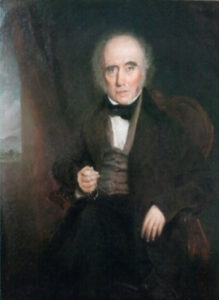
Mushet recounted his acquisition of the fireback from Hill in his Papers on Iron and Steel, which were published in 1840. In it he remarked upon the damage the fireback had sustained in its lower part through the action of fire. He also speculated on the possibility of it having been cast at an early iron furnace to the south of Merthyr Tydfil, having rejected the possibility that it might have been made in the Forest of Dean because of its early date of 1553. Mushet died in 1847 and the fireback passed into the possession of his son Robert.
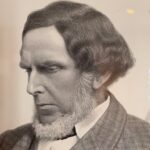
The fireback was still in Robert Mushet’s hands when Llewellin was able to have the above drawing made of it. He also noted the damage it had suffered and mentioned that, as well as the initials E and R in the top corners, there were traces of ‘some ornaments’ in the bottom corners, which he suggested might have been fleurs-de-lys.

While the present whereabouts of Robert Mushet’s fireback is not known to me, another one in the same style resides at Davington Priory, in Faversham, Kent. It was acquired by a former owner, the stained glass artist, Thomas Willement (1786-1871). In the 1830s or early 1840s Wells cathedral in Somerset was undergoing extensive restoration during the incumbency of Dean Goodenough and Willement visited there on several occasions. He wrote that he had noticed a fireback in the Deanery, “having on it the arms, Crown, and initials of King Edward VI, with the date 1553”, and that the Dean had presented him with a plaster cast of it (now in St Mary Magdalene’s church, which adjoins Davington Priory). Edmund Goodenough died in 1845 and, shortly after, Willement received a letter from his widow, Frances. She was in the process of packing up to vacate the Deanery and wondered, as Willement had admired it, whether he would like the fireback for himself. It was duly collected from Wells and remains to this day in the entrance hall of the priory.
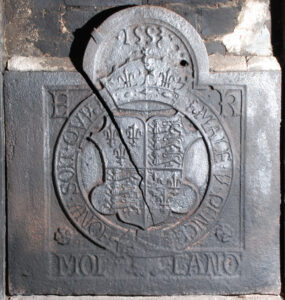
The two firebacks are not, of course, one and the same as both were in different hands at the same time, and the Davington casting differs from Mushet’s in having an additional inscription below the Garter and shield. This reads MOL LAND, which is the name of a village and manor in north Devon. In the mid-sixteenth century, when the fireback was made, the Manor of Molland was a possession of the Courtenay family, sometime earls of Devon. It is worth noting, however, that as Mushet’s casting had been described as having been subject on its lower edge to “a considerable action by fire”, that inscription might have been obliterated. Llewellin’s drawing gives no hint of such damage, nor of the ‘ornaments’ in the bottom corners, and seems to have been intended to present the fireback as he thought it might have looked originally. Significantly, the buckle and the down-turned strap end of the Garter, which one would expect on Mushet’s fireback, is missing on Llewellin’s drawing, suggesting that it had indeed originally borne the Molland inscription.
David Mushet speculated that his fireback had been produced at an early iron furnace close to the Plymouth works where Anthony Hill had found it, and Llewellin concurred. However, as I have written elsewhere, claims of the casting of firebacks at particular furnaces are only credible with supporting evidence; circumstance and mere proximity are no guide. The earliest dated evidence of blast furnaces in South Wales, where firebacks could be produced, is in 1564-5 with sites at Tongwynlais and Pentyrch, both in the lower Taff valley. Operation a year or two earlier is possible but a decade earlier is thought to have been unlikely. At that time most production of iron was in the Weald of Sussex. It is curious, nevertheless, that both firebacks had an association with the western side of England and Wales.
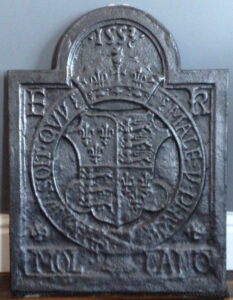
This version of the Davington fireback is a twentieth-century commercial casting. F. Parkin and Sons Ltd., long-established iron founders of Exeter, whose business closed in 1991, advertised it, among others, in their catalogue of reproduction firebacks as late as 1972. Presumably copied from another casting like the Davington back, it does not have the wide border that both of the historic castings had, but Parkin and Sons may have altered the version they sold by reducing the width for aesthetic reasons or to save metal.
While it has been possible to attribute some surviving firebacks to production in Great Britain earlier in the sixteenth century, and there is documentary evidence to corroborate that, the firebacks described here from the year 1553 are the earliest that bear a date and can be reliably accorded a British provenance.

